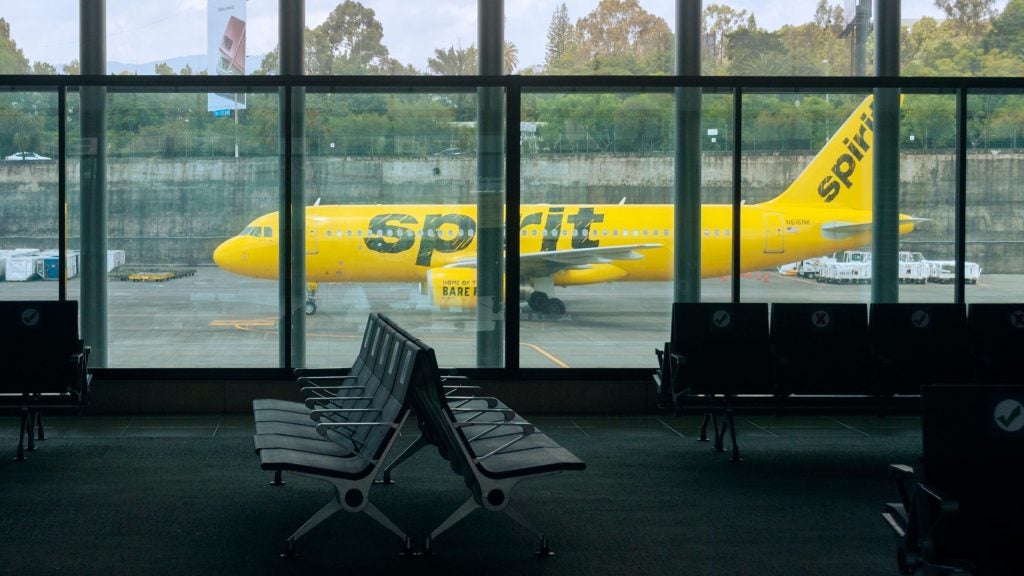
Beating the weather with enhanced vision systems (SEVS)
Despite advances in technology, adverse weather conditions continue to pose a potent threat to aircraft, particularly at this time of year when temperatures in the atmosphere move faster, the winds increase and visibility can fluctuate rapidly.
Honeywell’s enhanced vision system (SEVS), which has been described as something out of Star Wars, has been developed to address the problem of visibility in particular. The technology seamlessly combines radar-based sensor information with terrain and obstacle data and enhanced, synthetic vision, providing a highly-detailed, three-dimensional graphic view of the landing environment on a primary flight display, regardless of outside conditions.
Pilots will thus be able to land aircraft in all weather and light conditions without using external, visual reference points. The system will supply other important information, such as the speed at which the plane is flying, the condition of the aircraft and the direction in which it is heading.
Such significant advances rely upon a number of technologies. Honeywell’s terrain database, for example, contains information accrued from 800 million flight hours. Its sensor fusion technology uses a radar sensor’s return to determine whether an area is occupied or not, for example by planes on a landing strip, which would normally be invisible from the cockpit of an airborne plant.
Poor visibility, particularly linked to bad weather, causes 55% of flight delays. Aircraft are generally unable or forbidden to land if their pilots cannot see the runway from a height of 200ft.
Hence, the average cost of grounding or diverting a Boeing 707 to another airport due to poor climatic conditions is estimated at US$6,000. Yet Honeywell’s system can lower the 200ft limit by around 50ft and thus reduce by 50% airport closure time due to bad weather. The technology will also reduce the likelihood of runway overshoots, by continuously informing the pilot of the energy levels that he / she has dissipated and where he / she is likely to touch down.
How well do you really know your competitors?
Access the most comprehensive Company Profiles on the market, powered by GlobalData. Save hours of research. Gain competitive edge.

Thank you!
Your download email will arrive shortly
Not ready to buy yet? Download a free sample
We are confident about the unique quality of our Company Profiles. However, we want you to make the most beneficial decision for your business, so we offer a free sample that you can download by submitting the below form
By GlobalDataHoneywell is currently conducting intensive tests on its product using military vehicles, especially helicopters. Meanwhile, its Integrated Primary Flight Display synthetic vision system is deployed on multiple business and corporate platforms and SEVS could soon follow.
Businesses tend to make purchase decisions faster than airlines. Hence, the deployment of SEVS in commercial jets could take another five to ten years.
Low ceiling, low vis – required navigation performance (RNP)
General Electric has meanwhile identified significant, potential improvements to airport access during inclement weather. A study at Sun Valley Airport in Idaho, USA, has found that new, advanced, instrument approach procedures, using Required Navigation Performance (RNP) technology, will allow Horizon Air’s Bombadier Q400 passenger turboprops to fly in low-ceiling, low-visibility conditions.
RNP incorporates GPS, advanced instruments and computer-based navigation capabilities to define a precise trajectory, freeing the aircraft from the constraints of ground-based, radio-navigation infrastructure.
RNP will also be improved over time to allow lower decision heights, reduce visibility requirements and enable various types of aircraft to use the system, aiding commercial and business aircraft operators and general aviation.
Clear air with Egnos
Such advances have not escaped Europe. In March 2011, the European Commission approved Egnos, the European Geostationary Navigation Overlay System, as suitable for use in aviation.
Egnos, which came into operation in 2009, is a joint project of the European Commission, the European Space Agency (Esa) and Eurocontrol, the European organisation for safety of air navigation.
In November 2011, Skyguide, Switzerland’s air navigation provider, adopted its first approach procedures using data from the Egnos satellite system. Switzerland is only the second European country after France to do so, with Zurich Airport embracing GPS satellite-based approach procedures.
The system comprises three geostationary satellites and a network of ground stations, receives GPS signals, analyses and corrects errors and then transmits updated information to users. It also significantly increases the accuracy and reliability of satellite navigation systems such as GPS.
It can tell planes and helicopters where they are in the sky to within a couple of metres or less. Therefore it can be deployed reliably by pilots as a navigational tool and will be particularly useful at small airports, where ground infrastructure is relatively limited. Egnos should also assist with some final approach phases and in improving the positioning of aircraft en route.
Greater accuracy and better management of timing will thus increase air transport safety and allow more efficient use of airspace. Fewer planes entering stacking will lower fuel consumption and volumes of greenhouse gas emissions.
Egnos currently supplies its service to the European Economic Area but coverage could be extended to Africa and even South America. In addition, the Galileo satellite system, which is to deliver high-precision timing and navigation signals throughout the globe, will begin to come into service in 2011.
It will comprise an 18-satellite phase extending into 2012 and costing more than three billion euros, and a completion stage involving 12 spacecraft and 1.9 euros.
Nosing in on NextGen
Meanwhile, the ‘NextGen’ air traffic control system, which is to be introduced in the USA in 2012 and is to achieve fully operational status by 2022, will be an undoubted aide to accurate navigation, whatever the weather.
The new system will deploy GPS satellites to pin-point once a second every plane’s precise position in the sky, plus onboard radios that allow each aircraft continually to see (and to be seen by) all other aircraft nearby.
The ground-based, air-traffic control radars that have hitherto tracked airplanes, and that scan a small arc of airspace every 12 seconds, have lacked the capability to monitor aircraft when out of range or between scans.
The ‘NextGen’ system should significantly improve safety, allow planes to fly in tighter formations through busy airspace, save time and fuel and facilitate the management of increasingly busy skies.





